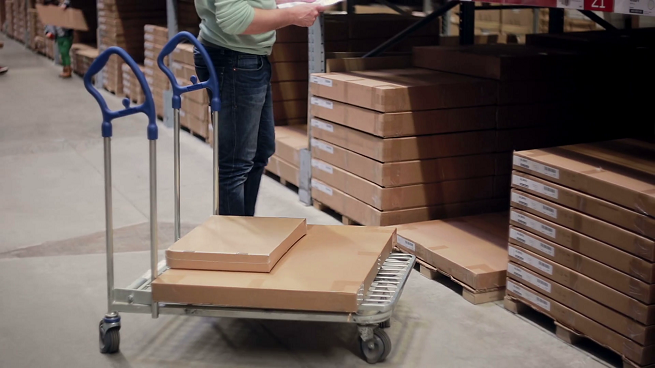Businesses with storage warehouses for their products rely on a lot of equipment to help with the efficient movement of their products. One of the most common equipments used in warehouses is the flatbed trolley.
While trolleys are simple enough, business organisations should keep in mind that not all trolleys are created the same. Some trolleys are specifically manufactured to carry only up to a maximum load limit. Likewise, the nature, shape, size, and weight of the load to be transported should also be considered when planning to purchase a trolley for your organisation. Here are some of the factors that you need to consider.

Know the Type of Flatbed Trolley that You Will Require. There are many types and variations of flatbed trolleys and carts, depending on how they will be used. Flatbed trolleys may differ in the materials they are made of, from the traditional wooden base and steel frame to plastic-clad versions for use in clean environments. Trolleys may also differ in their wheel options to cope with different types of ground conditions. Likewise, trolleys can come with options such as dead man breaks that stop the trolley when the handle is released. Some trolleys may come with options such as built-in weighing scales and even engine-powered trolleys that enable the users to move heavier weights with minimal efforts. Knowing your company’s specific requirements for moving loads will help you choose the right type of flatbed trolley.
Design a Pathway. If you are using a warehouse for storage, you must design a pathway that your trolleys can roll through smoothly. When creating a pathway, you must account for your trolleys’ maneuverability and create pathways that can accommodate two trolleys passing each other and being able to maneuver them on the way back. When you have an efficiently-designed pathway, your storing and delivery times will speed up, and you will also ensure that you are prolonging your trolley’s lifespan.
Consider entryways, exits, and spaces. A flatbed trolley’s main purpose is to move or transfer loads with minimal risk of getting damaged. When choosing a trolley, you must consider the entryways of your warehouse and your delivery vehicles. For example, how big your delivery vehicle will also determine whether you will need a trolley that can be rolled up a ramp and fit into the vehicle or if you will need a trolley that has its powered lift table.
Establish a maximum load for your trolleys. Flatbed trolleys are rated according to the maximum load that they can carry. Most flatbed trolleys that weigh 4 kg can carry a maximum load of 150 kilograms. However, stating the maximum load to your employees may not be the best guide. Instead of counting the load weight, you can train your employees to load the trolleys with a maximum number of boxes instead. Likewise, even if the maximum load is 150 kg, you should not load the trolleys up to their maximum limits. This practice will help prolong the lifespan of your trolleys.
Label Your Flatbeds. Suppose you are using multiple flatbeds in your warehouse, it is best to label them according to their load limits, type of products to be loaded, acquisition date, condition, and the person accountable, to name a few. Properly labelling your equipment will ensure that your flatbeds are where they are supposed to be and are used where they are supposed to be used.
Lastly, it is important to invest in maintaining your flatbed trolleys, such as making sure that the wheels are working smoothly and all the parts are in order.